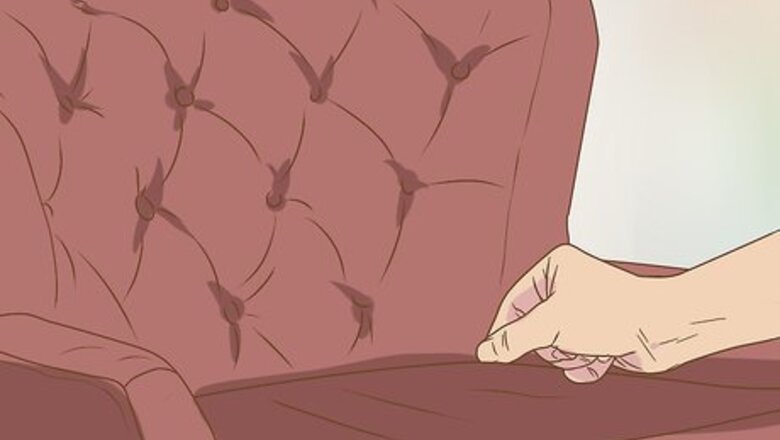
views
Vacuuming Your Chair
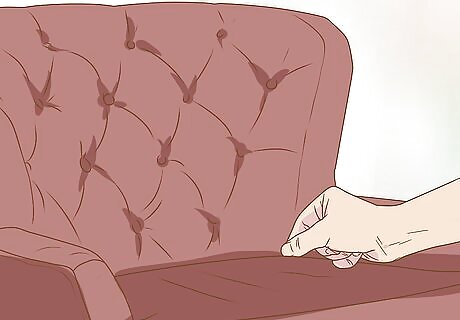
Remove debris before you vacuum. Use your fingers to remove large debris from your chair before you vacuum it. Be sure to also check crevices in your chair for foreign matter that can clog your vacuum. Finally, brush off extra dust or loose dirt off your chair before you vacuum it.
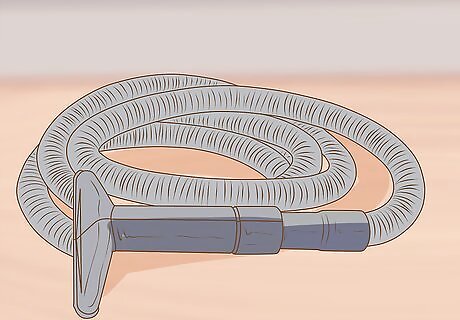
Use an upholstery attachment. If you have a vacuum attachment for upholstery use it. Alternatively use a nozzle/hose attachment or a brush attachment. You can also vacuum with a handheld vacuum.
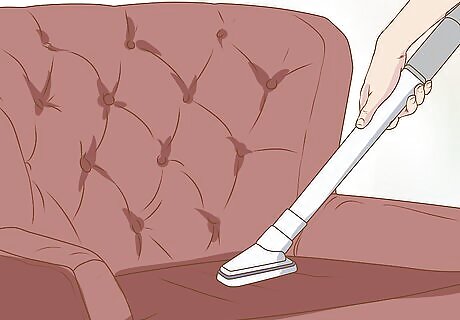
Vacuum with short strokes from left to right. Use short, overlapping strokes. Start your strokes at the top of the chair and work your way down. This technique will help lift dirt, especially from nappy material, like velvet and corduroy. Vacuum in the crevices around cushions and also underneath them (if they are removable). Set the suction to low for delicate fabrics like silk or linen.
Removing Stains

Clean spills right away. Spot clean spills on your chair immediately so they do not set and become stains. Use a soft cloth and blot up the spill. Never rub or scrub your cloth into the spill. Blotting up the spill will lessen the chance of staining and prevent the spot from spreading. Use furniture polish to clean spills on leather or vinyl chairs. Consult with a professional if you’d like to clean a valuable or cherished heirloom chair.
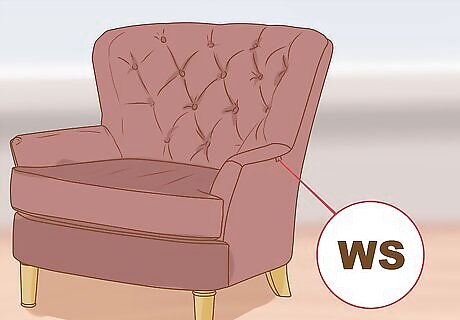
Choose the right cleaning method for your upholstered chair. Check the tags on your chair to see what is recommended for cleaning it. Understands the codes that you might find on your furniture. Codes “W” and “WS” mean you can clean it with water or a water-based solution. “S” means that you can use a water-free cleaner, like dry-cleaning solution. “X” means it requires professional cleaning, though you can vacuum and brush it. Consult a professional if you have a chair without a tag, like an antique.

Make a cleaning solution with mild dish soap. Make your own cleaner if your chair’s fabric can be cleaned with water or a water-based solution. Mix ¼ cup (59 mL) of mild dish soap and a cup (240 mL) of warm water. Stir the soap and water until it is foamy. Dab the soap and water on any spots or spills. Be sure to blot up any excess soap and water. Don’t rub soap and water into spots or spills, because it can potentially stain your upholstery.
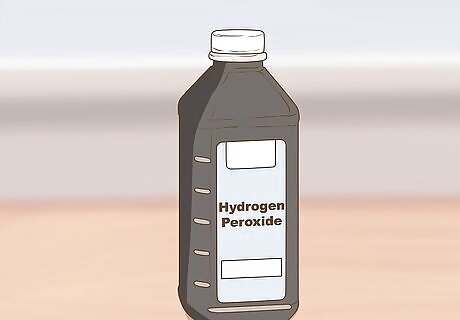
Use hydrogen peroxide. Clean spots and spills with 3% hydrogen peroxide. Use a soft cloth to apply the hydrogen peroxide. If you don’t have 3% hydrogen peroxide, dilute 1 part 35% food-grade hydrogen peroxide with 11 parts water to get it to 3%. To dilute 35% hydrogen peroxide, mix 1 and ¼ tablespoons (18.48 mL) of 35% hydrogen peroxide to ¾ cup plus 2 and ¾ tablespoons (220.66 mL) water to make one cup (240 mL) of 3% hydrogen peroxide. Spot test your upholstery with your hydrogen peroxide before using. Test the spot in a location that can’t be seen, like the underside of the chair.

Blot your stain with vinegar. Use a soft cloth to blot some white vinegar directly on the spot. You can dilute the vinegar with equal parts water for a more gentle cleaner. Let the vinegar soak into the spot for about 15 minutes before you blot it dry. Spot test the vinegar before using it. EXPERT TIP Raymond Chiu Raymond Chiu House Cleaning Professional Raymond Chiu is the Director of Operations for MaidSailors.com, a residential and commercial cleaning service based in New York City that provides home and office cleaning services at affordable prices. He has a Bachelors in Business Administration and Management from Baruch College. Raymond Chiu Raymond Chiu House Cleaning Professional Our Expert Agrees: White vinegar is an excellent option for cleaning most types of upholstery. Add two parts warm water and one part white vinegar to a spray bottle, then shake the bottle well to make sure everything's mixed. Then, spray the mixture onto the upholstery and use a soft rag or brush to scrub the area gently in a circular motion. If the upholstery is leather, mix the vinegar with olive oil instead of water, then spray the surface and buff it with a soft cloth.
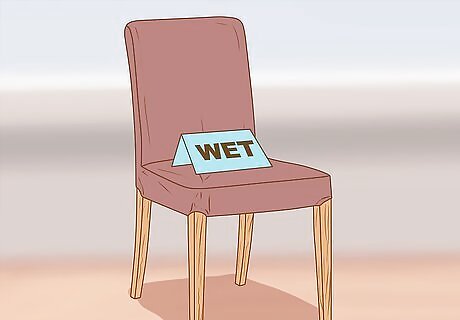
Let it dry. Anytime you get your upholstery wet, let it dry before sitting on it. Don’t allow anyone to sit on the chair while it’s drying. To speed up the process and ensure everything is dry, keep all cushions separate while they dry. Also keep any non-upholstered parts of the chair dry while you clean with any liquid. This will prevent rusting, corrosion, or warping of metal or wood parts.
Steaming Your Upholstery Clean
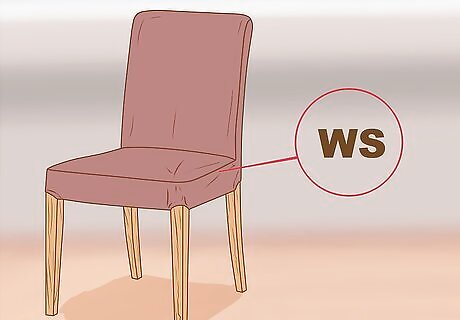
Make sure steaming won’t ruin your chair’s upholstery. Check your chair’s label to be sure that steaming it won’t shrink the fabric or otherwise ruin it. If the cleaning code on the chair’s label says that it cannot be cleaned with water or water-based solutions, avoid steaming it. Consult with a furniture cleaning professional if you’re not sure.
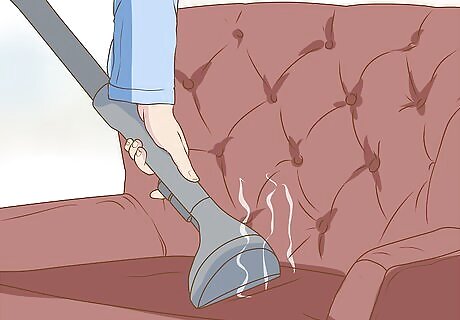
Use a steam cleaner. Rub the steam cleaner over your chair in a grid to cover the entire piece. Spend extra time on any heavily soiled sections. Use the scrub brush or microfiber pad attachments on any hard to clean areas. Brush away the dirt that the steam loosened. Steam cleaners can be rented at most hardware stores.
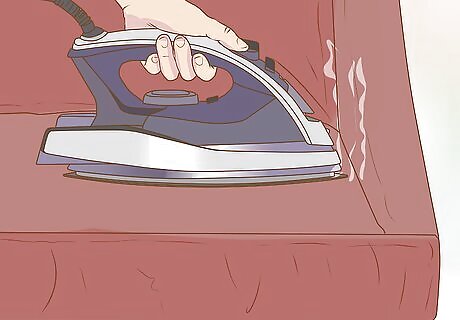
Steam it clean with your iron. Clean a small spot using an iron that has steaming capability. Fill your iron with water. Set it for the heat that is most appropriate for the fabric you are cleaning. For example, use a lower heat setting for delicate fabrics made of synthetic materials or silk, and use higher heat for cotton. Put the iron over the spot and hit the steam button. Brush away any debris loosened by the steam.


















Comments
0 comment